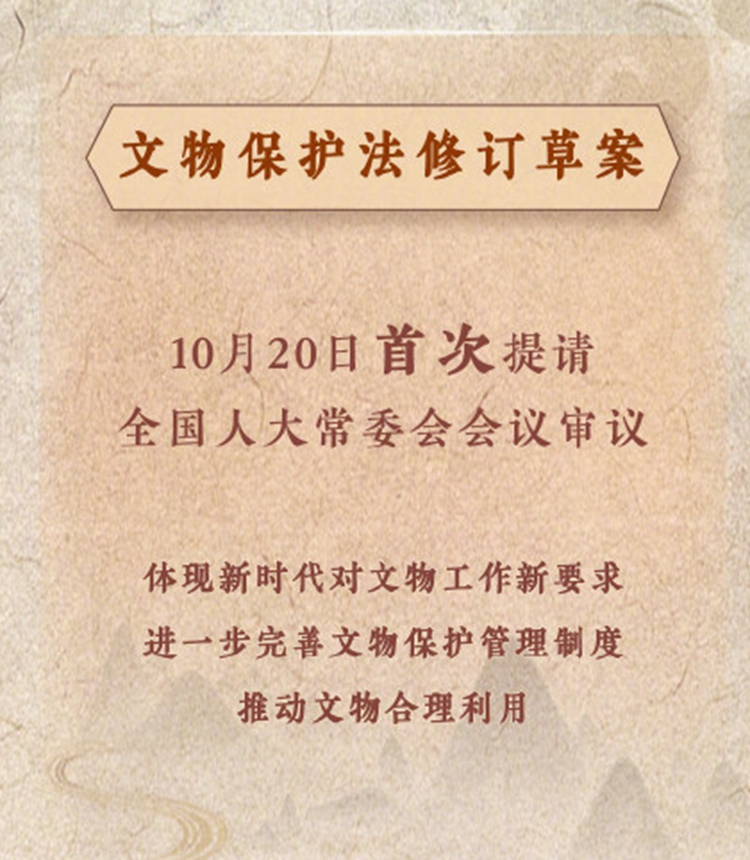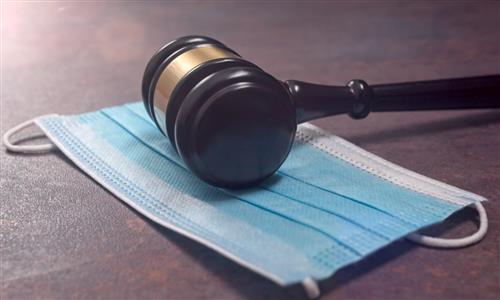ARTS / CULTURE & LEISURE
Draft law revision to enhance cultural relic conservation submitted for first time

Screenshot from website
Refining China's current Law on Protection of Cultural Relics, a draft revision was recently pitched for the first time ever to the sixth session of the Standing Committee of the 14th National People's Congress on October 20 in Beijing.
The proposal, which is in the process of its first reading, aims at reinforcing the country's cultural relic protection system with measures and terms that cater to the field's current status quo in China.
Enhancing the "management system" of cultural artifacts was highlighted in several regulations. The spirit of "archaeology first, transferring second" was one of them.
Jia Zhengyu, a cultural relic expert and archaeologist, told the Global Times that this spirit can have a maximized good impact on "conserving immovable cultural relics" as well as relic sites with distinguishing features.
"Archaeology should be prioritized before the usage of land, like commercial construction for example. It is very easy for inappropriate usage of land to damage archaeological works, not only relics, but also the whole configuration of a site," Jia told the Global Times.
Digital efforts in strengthening cultural relics preservation was also underlined in the draft. Powered by China's growth in independent innovation, "technology" has become an essential tool integrated in projects like the "3D restoration of Dunhuang fresco paintings," and also the "full-automatic box design" that allows the Sanxingdui site to be investigated without being exposed to the elements.
The establishment of museums, memorial halls and archaeological site parks was also stressed in the draft as means to protect relics while showcasing their cultural value.
Museum expert Li Liyang told the Global Times that digital innovation also extends to social sectors such as public education. It has become a phenomenon for digitally restored relics to become a new way for museums to display traditional Chinese culture.
"Historical relics hold tremendous social value that they can ignite the public's cultural consensus and confidence," Li remarked.
"Relic repatriation," an intricate subject that involves international efforts, was also been mentioned in the draft. Besides emphasizing the subject's urgency and importance, the draft also affirms the country's right to recollect illegally exported and lost overseas cultural relics.
Similar to its rights to take back relics, China will also return foreign relics illegally imported into the country.
Jia noted that other than showing the country's dedication to regaining looted cultural artifacts, these regulations were designed to be "reciprocal," suggesting China's "collaborative mindset concerning the global cultural community."
In August, a China-Switzerland collaboration in the cultural relic field brought five ancient Chinese treasures back home. The milestone was achieved through a "bilateral agreement" signed between the two countries in 2013.
"This restitution is an important sign of the fruitful cooperation between Switzerland and China as well as in the fight against the illicit trafficking of cultural property," Fabienne Baraga, a staff member with Switzerland's Federal Office of Culture, said.
Baraga told the Global Times that the China-Switzerland project is an "important sign of the fruitful cooperation" between the two countries.
The law in the 1980s was already initiated with clear outlines addressing areas such as "the conservation of immovable cultural relics," "collection of cultural facilities," the "exit and entry of cultural relics" and also "archaeological excavations."
"Cultural relics, no matter their age or size, are irreplaceable resources for China," said Jia.

